HEMS AW109S Collided With Radio Mast During Night Flight (Babcock MCS Portugal I-EITC)
On 15 December 2018 Leonardo AW109S I-EITC of Babcock MCS Portugal flew into a radio mast at night near Serra de Santa Justa, Valongo, Portugal.

HEMS Leonardo AW109S I-EITC of Babcock MCS Portugal Approaching the Ridge Line and Radio Mast at at Serra de Santa Justa, Valongo (Credit: adapted from GPIAAF)
The HEMS air ambulance helicopter was operated under a 5 year, 4 base 24/7 contract for the the National Institute of Medical Emergency (INEM), awarded in June 2018. It was en route, returning from an urgent inter-hospital patient transfer that afternoon. On board were two pilots and two medical passengers. All died in the accident.
The Accident Flight
In their safety investigation report, issued 6 March 2020, the Portuguese accident investigators GPIAAF (Gabinete de Prevenção e Investigação de Acidentes com Aeronaves e Acidentes Ferroviários / Office for the Prevention and Investigation of Accidents in Civil Aviation and Rail) explain that after the successful inter-hospital transfer the crew initially retired to a coffee shop to wait out the poor local weather (rain and low cloud). The crew made several phone calls related to the weather. Witness testimony was the Commander was comfortable with an IFR diversion and night-stop at Porto International Airport if required.
Subsequently the helicopter departed Massarelos heliport, at 18:35 UTC, heading to refuel at Paredes-Baltar heliport before returning to its base at Macedo de Cavaleiros heliport. None of these sites had navigation aids or meteorological data. Although not used, Porto International Airport’s navaids were operational.
At 18:38:03, the crew informed the ATC that they will maintain an altitude of 1500 ft to Baltar.
According to secondary radar data provided by the air navigation service provider, after take-off, the aircraft proceeded with a direct heading to the Paredes-Baltar heliport, flying at a cruising speed of around 130 kt and at altitudes oscillating between 1400 ft and 1500 ft.
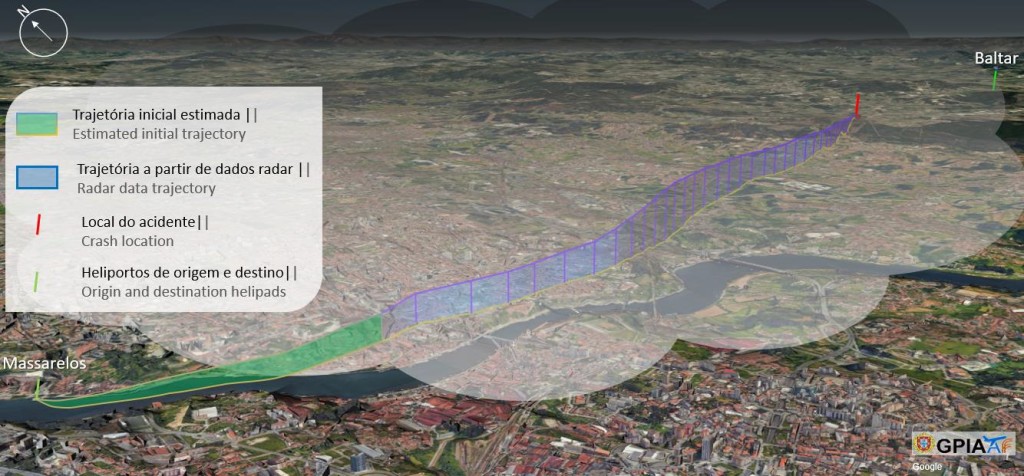
Estimated Flight Path and Radar Data of HEMS Leonardo AW109S I-EITC of Babcock MCS Portugal (Credit: GPIAAF)
At 18:40 the helicopter collided at 371 m (1217 ft) AMSL just 2.2 m (7 ft) from the top of a 66 m (216 ft) guyed steel lattice radio broadcast tower.
It was not possible to confirm if this beacon was operating on the accident night. [Note a lower adjacent deactivated mast was unlit.]
This tower (marked ‘1’ below) was actually one of 10 obstacles along the ridge line.
However only those 200 ft (60 m) above ground level were marked, with only those over 328 ft (100 m) listed in the AIP. The investigation subsequently identified that some of the obstacles were unlit.
In relation to emergency response:
After the aircraft hit the ground, the Emergency Locator Transmitter (ELT) signal was activated, however, it was not received by the COSPAS/SARSAT satellites, as the system lost the antenna.
In accordance with the existing contract for the HEMS service provision…the operator should have installed an aircraft tracking system that would allow the contractor to follow up the performed missions in real time. This system was not installed on the aircraft by the operator or verified by the contract [holder].
Consequently, lacking an accurate fix on the aircraft an extensive search was required.
Safety Investigation
GPIAAF note that:
A risk analysis of the HEMS operation service in Portugal and its limitations was not [produced] by the operator or required by the [customer], especially in the northern part of the country and on the usual routes, where evidence suggests that it is followed a typical low altitude flight profile, in some cases below the minimum altitude values imposed by the regulation, and frequently in adverse weather conditions.
The operator, by accepting the contractual operating conditions and the heliports designation where it provides the service, without adopting comprehensive mitigation measures is indirectly accepting the risk of operation under the existing conditions.
Such mitigation measures that may be considered are the use of night vision equipment as provided in Part SPO NVIS Subpart H (Helicopter Operation) night vision equipment), the use of performance-based-navigation (PBN) solutions with points-in-space (PinS), combined GPS navigation and integrated Global and European Air Navigation Strategy (EGNOS) solutions or, simply installing and certify weather stations on high frequency heliports, or other actions considered to be appropriate.
In the absence of met data at the service’s bases and hospital heliports, crews had been telephoning individuals who were not qualified met observers for information. GPIAAF’s analysis of past flights indicated that “weather minimums were not always respected, as was the case of the accident flight”.
The investigators explain that:
In order to be permitted an IFR flight under IMC conditions, the aircraft must be equipped and certified for the IFR flight, the crew properly qualified and authorized and the airport infrastructure need to be equipped and certified for this type of operation, which was not the case.
VFR flight may be permitted at night and is known as Night VFR. This is generally permitted only under more restrictive conditions, such as maintaining the referred minimum flight altitudes. These flight restrictions have the main purpose to ensure the terrain clearance.
The boundary criteria between IMC and VMC are known as the VMC minima and [in this case were]:
The investigators comment that:
The pilot of the crash flight was described by his colleagues as a competent professional, very experienced and knowledgeable of the operation and constraints of the area, with a high mission spirit. The co-pilot, with significantly less experience, would have easily followed the pilot decisions…
Using statements and CCTV data the investigators reconstructed a “probable scenario of the surrounding operation prior to the accident flight” noting
- The local weather conditions knowledge (Massarelos) by observation and discussion with the crew
- Estimated adverse weather conditions en route to Baltar, with no official weather data available for the crew
- Cloud ceiling above the mountaintop near Baltar base estimated by a phone call, however no official weather data available for crew
- A crew moderately motivated to finish the mission by repositioning the aircraft at its base in Macedo de Cavaleiros,, if unable to take-off due to lack of weather minimum conditions, crew would overnight in Porto.
The weather was analysed by after-cast as:
- an approaching cold frontal system originated low ceilings, visibility below 5km, light to moderate precipitation, moderate south wind, temporarily with gusts
- moderate to severe turbulence was very likely to occur between the surface and FL150 at 18:00 UTC
- very likely that the event site was characterized by visibility below 1000 m
- likely that a first thick cloud layer existed between 300 ft and 400 ft and a second layer, between 1200 ft and 1500 ft.
Once in the cruise, the Aircraft Commander was…
…not maintaining the minimum regulatory safety altitude to the terrain and….fluctuating the altitude maintaining/seeking the visual cues.
The close direct route to Paredes-Baltar and the high speed at which the aircraft was flying, suggests a high confidence for the ground clearance, even under minimal conditions.
Probable Flight Conditions Before Impact of HEMS Leonardo AW109S I-EITC of Babcock MCS Portugal (Credit: GPIAAF)
As illustrated in the figure above, the crew would have understood that the separation of the terrain was guaranteed and that the mountain and main obstacle, would be overcome without difficulty, since they had in the background scattered light from the Campo village, A4/A41 motorway illumination, etc., where the mountains profile ridge appeared well defined.
It is likely that the [Terrain Awareness and Warning System (TAWS) fitted – within a Garmin GNS 530] had conditions to trigger an alert to the crew about terrain proximity, however, it was not possible to determine whether or not these warnings were inhibited.
Inhibiting TAWS alerts when operating at low level to suppress frequent nuisance warnings is common, however the TAWS function within the GNS 530 was, at least initially, deactivated because according to GPIAAF…
…as per Garmin GNS 500 Series Installation Manual, TAWS functionality is not approved for use in rotorcraft. Additionally, according to the same Installation Manual, 500 Series TERRAIN functionality is not recommended for use in rotorcraft.
The investigators imply the functionality was re-activated and certainly the Installation Manual (p7-2) does not preclude specific STCs for TAWS activation on rotorcraft. Also:
It is likely that the aircraft’s navigation system database was not up to date, however, was not a factor to the accident.
GPIAAF expressed concern at the limited corporate support for flight crew in decision making (“including, but not limited to, lack of reliable weather information”) and in oversight of crew schedules (which were managed locally at each base by the crews themselves). They also note that:
Regulation EU 965/2012, in its Annex V, part-SPA subpart J, states in SPA.HEMS.140 Information and documentation: (b) Relevant extracts from the operations manual shall be made available to the organisation for which the HEMS is being provided.
The operator must thus ensure that the [customer] has access to information and operation data, risks and mitigation actions on the contracted service. The investigation found that the [customer] up to the accident date did not have or requested such information from the operator, but only received generic contractual aspects data of the operation regarding the four bases and with limited information such as hours flown and occasional problems in the resource’s availability.
They observe that the customer had not audited or inspected their contractor even though the contract stated:
INEM will carry out a quantitative and qualitative inspection…
In their comments on the draft accident report, ANAC (the National Civil Aviation Authority) informed the investigators “that in 2019 the operator was subjected to increased supervision”. However:
…no evidence was supplied to the investigation on the supervision plan for 2020…allowing [GPIAAF] to assess the continued increase in supervision…
GPIAAF Conclusions
The accident was caused by:
- VFR flight below the minimum altitudes provided in the regulations
- The crew forcing to maintain visual conditions with the ground, with marginal visibility conditions
- Operation on heliports without radio aids not allowing non-visual approach up-to a given altitude, compelling conditions for routine violation as per current regulations
- Due to orography, terrain artificial light conditions and atmospheric conditions, it is likely that the pilot understood that the terrain would be transposed without significant risk
- The aircraft contractual selection and acceptance with its specified range associated with lack of fuel supply solutions at the origin heliport (Massarelos)
- The lack of night signalling on the nearest lower tower or in at the intermediate level of the accident tower, as well as the adjacent towers installed in Serra de Santa Justa.
They comment that:
From the carried-out investigation, it is clear that the crew actions had latent conditions and causes related to the HEMS service organization and operation.
On complex environments, opportunities exist for short cuts and other ways of doing things that seem to be “a better way”, or at least, a way that just works when facing certain constraint.
In…medical emergency environments where life and death decisions are dealt with daily, the operator, the [customer] and the regulator have the duty and obligation to put the appropriate safety barriers to these shortcuts [in place].
…the safety of HEMS activity must result from a properly articulated action among all involved organizations, in order to establish the necessary conditions for risk control on the operation and to avoid that all decision-making process responsibility regarding safety, is put on the crews shoulders
Safety Actions
INEM reported they had strengthened contract monitoring, commenced contract audits, changes several processes, started a study on infrastructure improvements at operating bases, bough new helmets and flight suits for their medical personnel, held a ‘HEMS day’ with the Portuguese Air Force and Babcock and commenced human factors training with the Air Force (oddly not Babcock, their contracted operator).
Safety Recommendations
To operator, Babcock MCS Portugal:
- Safety Recommendation No. 2020/01: It is recommended that the operator review the fatigue risk management policy following the part ORO.FTL, AMCs, GM and national regulation. Additionally, the operator shall provide initial and recurrent fatigue management training to crew members, personnel responsible for preparation and maintenance of crew rosters and management personnel.
- Safety Recommendation No. 2020/02: It is recommended that the operator review and revise the operational procedures based on the decision-making process flowchart in order to assure a holistic approach to the HEMS mission risk control, currently based on the pilot in command decision only and with limited operational information.
- Safety Recommendation No. 2020/03: It is recommended that the operator control and distribute updated and unaltered applicable aeronautical databases to all aircraft in the fleet in accordance with the databases validity period or in accordance with a procedure established in the operations manual, if no validity period is defined following the CAT.IDE.H.355 GM2 on Management of aeronautical databases.
To INEM (National Medical Emergency Institute):
- Safety Recommendation No. 2020/04: It is recommended that INEM carry out an analysis and review of the HEMS operating conditions required in the specifications, including, where appropriate, mitigating measures on the established operating sites, the equipment installation to establish minimum operating conditions on the selected frequent operational bases and heliports to assure a proper service level determined by the emergency service. As an example, but not limited to, the installation and certification of weather stations with cameras allowing a real-time viewing and making this data available to crews.
- Safety Recommendation No. 2020/05: It is recommended that INEM ensure a close and effective monitoring of actual and new contracts, exercising its right and duty to oversight the contract performance over the technical aspects.
To ANAC (National Civil Aviation Authority):
- Safety Recommendation No. 2020/06: It is recommended that ANAC increase operator oversight, namely, and among other aspects, the crew duty time, rest and readiness limits, in accordance with EU Regulation 965/2012, DL139/2004 and Aeronautical Information Circular (CIA) 05/2010.
- Safety Recommendation No. 2020/07: It is recommended that ANAC, as the entity with the task of drafting and proposing civil aviation legislation, promote the adoption of appropriate legislation to establish the conditions and responsibilities for official inspection of the operational performance of night-time beaconing [sic] of air navigation obstacles, outside of airport areas.
Safety Resources
The Tender Trap: SAR and Medevac Contract Design Aerossurance’s Andy Evans discusses how to set up clear and robust contracts for effective contracted HEMS operations.
On error management:
…and our review of The Field Guide to Understanding Human Error by Sidney Dekker presented to the Royal Aeronautical Society (RAeS): The Field Guide to Understanding Human Error – A Review
Out past articles include:
- Italian HEMS AW139 Inadvertent IMC Accident
- Norwegian HEMS Landing Wirestrike (Norsk Luftambulanse EC135P2+ LN-OOI)
- Fatal Helicopter / Crane Collision – London Jan 2013
- EC135P2 Spatial Disorientation Accident
- EC135P2+ Loss of NR Control During N2 Adjustment Flight
- US HEMS EC135P1 Dual Engine Failure: 7 July 2018
- Misassembled Anti-Torque Pedals Cause EC135P1 Accident
- Austrian Police EC135P2+ Impacted Glassy Lake
- Maintenance Misdiagnosis Precursor to EC135T2 Tail Rotor Control Failure
- Regulator Missed the Chance to Intervene Before Fatal Tour Accident say TAIC
- That Others May Live – Inadvertent IMC & The Value of Flight Data Monitoring
- Life Flight 6 – US HEMS Post Accident Review
- More US Night HEMS Accidents
- US HEMS “Delays & Oversight Challenges” – IG Report
- Crashworthiness and a Fiery Frisco US HEMS Accident
- HEMS S-76C Night Approach LOC-I Incident
- US HEMS Accident Rates 2006-2015
- HEMS A109S Night Loss of Control Inflight
- ‘Procedural Drift’: Lynx CFIT in Afghanistan
- US Fatal Night HEMS Accident: Self-Induced Pressure & Inadequate Oversight
- HEMS Black Hole Accident: “Organisational, Regulatory and Oversight Deficiencies”
- Taiwan NASC UH-60M Night Medevac Helicopter Take Off Accident
- Night Offshore Windfarm HEMS Winch Training CFIT
- RCMP AS350B3 Left Uncovered During Snowfall Fatally Loses Power on Take Off
- EC130B4 Destroyed After Ice Ingestion – Engine Intake Left Uncovered
- Dim, Negative Transfer Double Flameout
- BK117B2 Air Ambulance Flameout: Fuel Transfer Pumps OFF, Caution Lights Invisible in NVG Modified Cockpit
- AAIB Report on Glasgow Police EC135T2+ Clutha Helicopter Accident
- US HEMS EC135 Dual Engine Failure: 7 July 2018
- Accident Report: Fatal Police Helicopter Double Engine Flameout Over City Centre
- Fatal MD600 Collision With Powerline During Construction
- UPDATE 26 September 2020: Fatal Fatigue: US Night Air Ambulance Helicopter LOC-I Accident
- UPDATE 2 January 2021: A Short Flight to Disaster: A109 Mountain CFIT in Marginal Weather
- UPDATE 31 January 2021: Fatal US Helicopter Air Ambulance Accident: One Engine was Failing but Serviceable Engine Shutdown
- UPDATE 17 April 2021: Plan Continuation Bias & IIMC in Kenyan Police AW119 Accident
- UPDATE 7 November 2021: Italian Alps AW139 Mountain Rescue Hoisting Blade Strike
- UPDATE 11 December 2021: Canadian Flat Light CFIT
- UPDATE 28 December 2022: Night Mountain Rescue Hoist Training Fatal CFIT
- UPDATE 8 July 2023: BK117 Offshore Medevac CFIT & Survivability Issues
- UPDATE 16 July 2023: SAR AW139 LOC-I During Positioning Flight

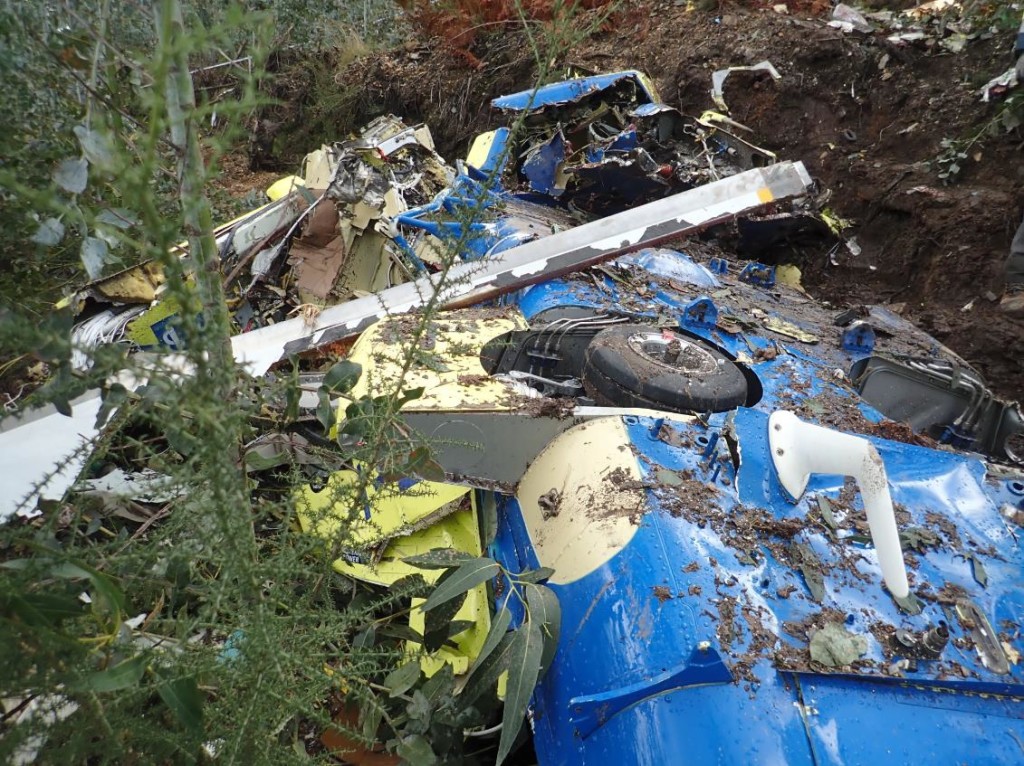
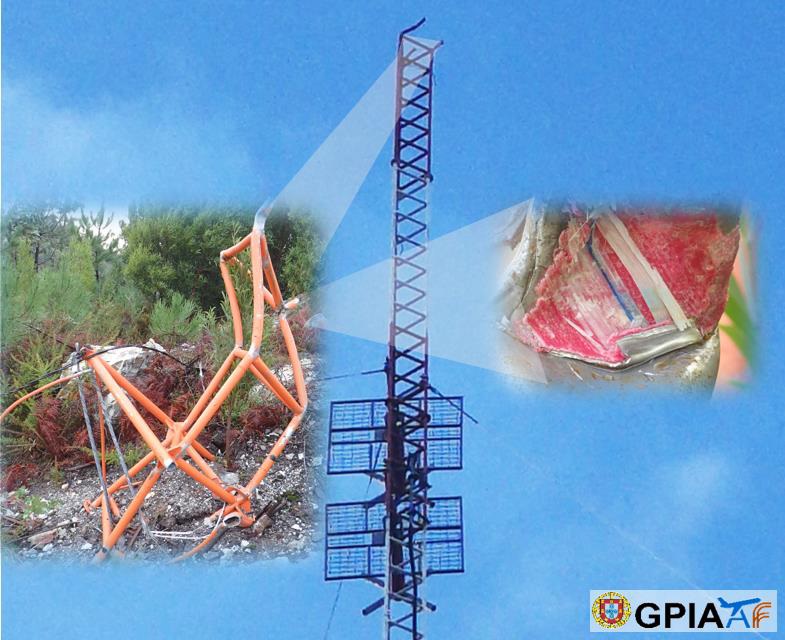


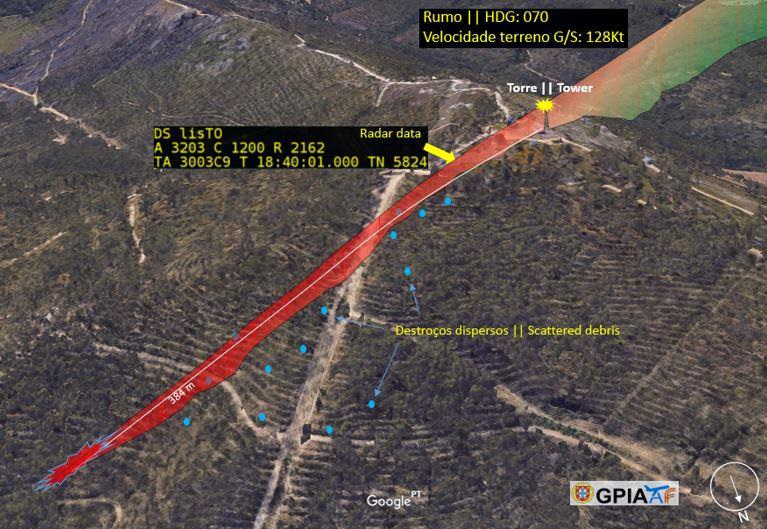


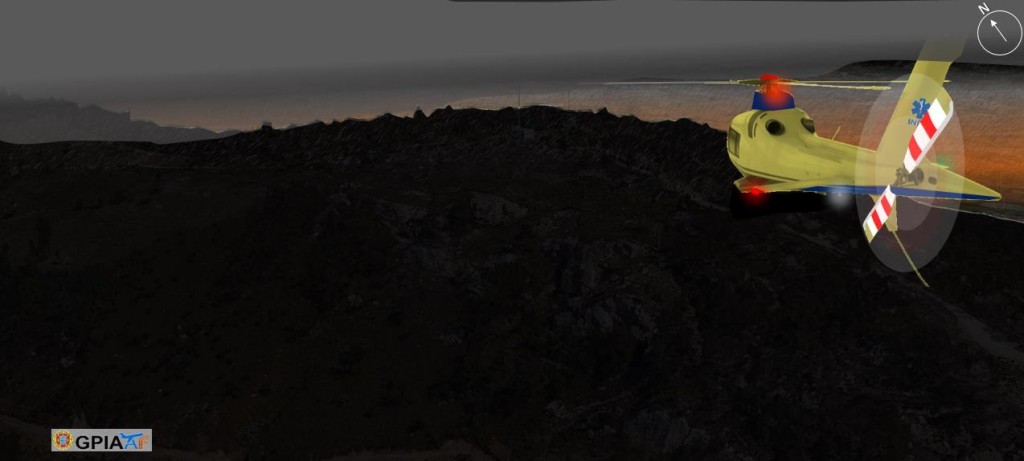
Recent Comments